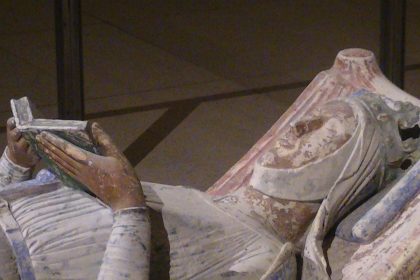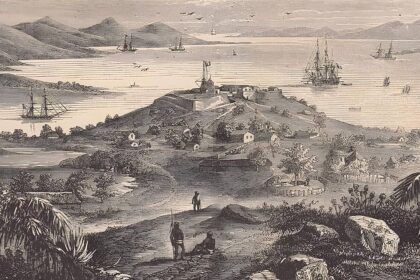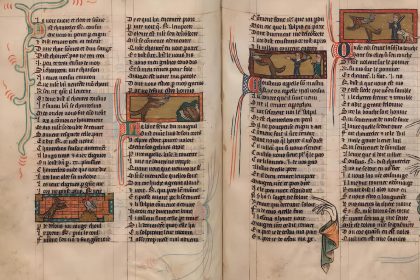How did Morocco gain independence? It wasn’t until 1956 that Morocco was no longer a French protectorate. On March 2, 1956, after years of uprising against French authority and talks with that nation’s leadership, the country became independent. After struggling to remain independent for some time, Morocco fell under the influence of European powers in the form of protectorates in 1912. As a result of the Treaty of Fez, signed in 1912, France created a protectorate in Morocco. This arrangement gave France authority over Morocco’s armed forces and foreign policy while enabling the Moroccan sultan to keep his position and have some say over domestic matters.
After being a French protectorate since 1912, Morocco regained its independence on March 2, 1956. The relationship between the Alaouite Sultanate (‘Alawi dynasty) and France has always been tense. In contrast to Algeria, Morocco was never meant to be a colony of settlement, and its first “resident general,” Hubert Lyautey, who became Marshal of France in 1921, continued to have a significant impact on the French government’s administration of the country. After World War II ended, France initiated discussions in November 1955 that eventually led to Morocco’s independence the following year, in 1956.
The French protectorate in Morocco

European nations, notably Germany, Spain, and France, had viewed the Sharifian Empire of Morocco with jealousy since the 19th century. In March 1912, France ultimately asserted itself and created a protectorate over Morocco, wielding civil and military control while maintaining the Sultan’s throne. After being named resident general in 1912, General Lyautey played a key role in the French colonization of Morocco. His peaceful plan to improve the colony’s history and infrastructure was supported by the country’s traditional leaders. In spite of a severe lack of manpower, Lyautey was able to keep the peace inside his country and stave off German invasion efforts during the war of 1918.
The protectorate was threatened by an armed uprising headed by Abd el-Krim from 1921 to 1926. A force of 100,000 troops led by Marshal Pétain was tasked with defeating it. The Rif and the Atlas mountains were only calmed down after roughly 10 years. With the fall of France in 1940, Morocco saw the birth of its first nationalist groups in response to France’s attempts to increase its influence over the country.
In the wake of World War II, Sultan Mohammed bin Yusef declared Moroccan independence. Moroccan monarchs, and especially the future Mohammed V, were heavily active in the struggle for the country’s freedom, in contrast to the Lamine Bey’s somewhat muted impact on nationalist activities in Tunisia. Due to the importance of the tribes, ongoing tribal uprisings against Spanish and French rule in Morocco further complicated the political game.
The tribal uprisings toward the Morocco’s independence
During the French protectorate in Morocco in the 20th century, there were various tribal uprisings against Spanish and French control. One of them was Zaian War (1914-1921). Louis-Hubert Lyautey, the French representative in Morocco, planned to expand French authority into French Algeria from the Middle Atlas Mountains. The Zaians, commanded by Mouha ou Hammou Zayani, fought against this. The Zaians were able to do significant damage to the French despite the fact that their main stronghold of Khénifra had been destroyed.
The Rif War, which erupted between 1920 and 1926 and pitted the Rif tribes of northern Morocco against the Spanish colonial government, was one of the most pivotal of these uprisings. In 1920, the Rif tribes rebelled against Spanish control under the leadership of the prominent Abd el-Krim. The struggle continued for many years. In 1926, after years of fighting between the Rif tribes and the Spanish, the Rif War was finally concluded. The Spanish once again ruled over northern Morocco.
The first nationalist groups for the independence of Morocco
The Reform Movement (Mouvement de Réforme), established in the early 20th century by Moroccan intellectuals, advocated for social and political reform in the country, and the Moroccan Action Committee (Comité d’Action Marocaine), established in 1934, sought to unite Moroccan nationalists and advocate for independence from French rule. These and other organizations were crucial to the success of the Moroccan independence campaign and the subsequent independence victory in 1956.
Towards Moroccan independence

The call for national independence of Morocco gained momentum as World War II drew to a close. The Sultan of Morocco, Mohammed bin Yusef, used the occasion of the 25th anniversary of his coronation to call for the country’s complete separation from France. When the government, now under General Alphonse Juin’s command, became too heavy to bear, the Sultan showed his resistance by refusing to sign many dahirs (laws).
Hadj Thami el Glaoui was the pasha of Marrakech and the brother-in-law of the Sultan; he was also one of the most influential “feudalists” of the period. Together, the French government and Hadj Thami el Glaoui staged a fake uprising in August 1953, which ultimately led to the Sultan’s removal.
Ibn Arafa, an old and nondescript person, succeeded the exiled Sultan. Afterwards, other groups emerged in tandem with the established “authorities,” the most notable of which was the Istiqlal, an extremist nationalist organization.
However, France was not only dealing with the Algerian conflict but also the nationalist movement in Tunisia and the aftermath of the First Indochina War (1946–1954).
The country ultimately settled on a political solution, recalling the Sultan from exile after he had become even more popular and respected abroad. Upon his return to his nation, Mohammed V (Mohammed bin Yusef) was greeted by a gathering of almost 1.5 million people who showered him with adoration. After negotiations by the Edgar Faure administration in the La Celle-Saint Cloud declaration (November 1955), the French protectorate officially ended on March 2, 1956 and Morocco gained its independence on this same day.
After Morocco’s independence
In order to replace the Treaty of Fez, which had formed the French protectorate in 1912, Morocco signed a joint proclamation in Paris on March 2, 1956, marking its formal independence from France.
There were several obstacles for Morocco to overcome after gaining independence from France in 1956. After years of neglect under a foreign administration, the country’s infrastructure had to be rebuilt and brought up to modern standards. In addition to establishing and maintaining political stability, the Moroccan administration also had to struggle to foster economic growth and alleviate poverty.
Despite setbacks, Morocco has made great strides since achieving independence and is now often seen as a model Arab state.
Bibliography:
- Miller, Susan Gilson. (2013). A history of modern Morocco. New York: Cambridge University Press. p. 124. ISBN 9781139624695. OCLC 855022840.
- Hoisington, William A. Jr. (1 March 2000). “Designing Morocco’s future: France and the Native Policy Council, 1921–25”. The Journal of North African Studies. 5 (1): 63–108. doi:10.1080/13629380008718388. ISSN 1362-9387. S2CID 143725817.





